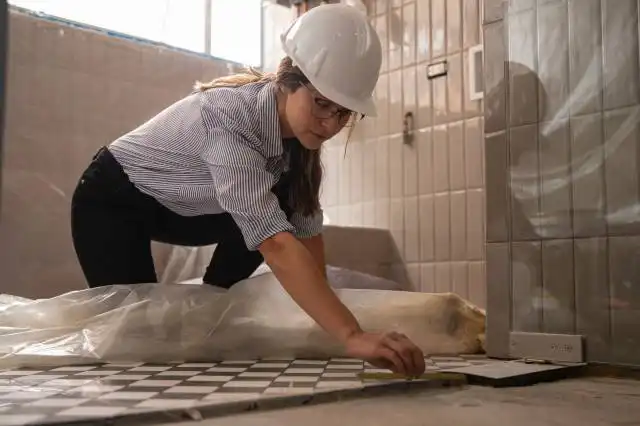Start an Upholstery Business
Harnessing the Power of Transformation: Diving into the Upholstery Business
| Updated


UPHOLSTERY BUSINESS
Calling all creatives with a flair for rejuvenation! Diving into an upholstery business allows you to bring tired furniture back to life, injecting new energy into preloved pieces through the magic of fabric and foam. Not only will you be in the heart of a thriving home décor industry, but you'll also be the maestro of transformations, turning yesterday's worn-out couch into today's trendy centrepiece. Essentially, this enterprise involves replacing old, worn-out materials on furniture with new ones, keeping unique styles alive and contributing to a sustainable environment with style and grace.
Jump to Business Plan
RELATED BUSINESS IDEAS
Browse ALL Home Improvement & Repair Solutions Business Ideas
Discover Your Perfect Domain
Unlock the door to your online success with our hand-picked selection of premium domain names. Whether you're starting a new venture or rebranding an existing one, the right domain can set the tone for your digital presence. Browse through our curated list, each with its unique potential to enhance your brand's visibility and credibility.
UPHOLSTERY MINI BUSINESS PLAN
This a quick reality check to help you identify the strengths and weaknesses of your business concept before you dive in.
Expected Percent Margins:
- Gross Margin: 40-60%
- Net Profit Margin: 10-15%
Estimated Earnings:
- Daily Earnings: $100 - $300
- Weekly Earnings: $700 - $2,100
- Monthly Earnings: $3,000 - $9,000
- Annual Earnings: $36,000 - $108,000
Actions to Achieve those Numbers:
Skills & Equipment:
- Upholstery Skills: This is a skill-based business. You or your staff should have excellent upholstery skills.
- Investment in Equipment: At least $5,000 - $10,000 initially for high-quality upholstery tools and machinery.
Marketing and Customer Acquisition:
- Online Presence: Leverage social media and websites to showcase your work. Target interior designers, restoration companies, and homeowners.
- Local Advertising: At least $200 - $500 a month for ads in local newspapers, flyers or local directories.
Building Relationships:
- Networking: Form relationships with local furniture stores, interior designers, and restorers for customer referrals.
- Customer Service: Prioritise excellent customer service to encourage repeat business and word-of-mouth recommendations.
Cost Control:
- Materials: Source high-quality materials at the best possible prices from reliable suppliers.
- Operating Costs: Find an affordable workspace and keep overhead expenses minimal by efficient use of utilities.
Volume:
- Job Volume: The more jobs you can handle without compromising on quality, the higher your earnings. Aim to complete 1-3 pieces a day depending on complexity.
- Pricing: Charge competitive upholstery prices that reflect the quality of your work and costs involved.
Remember, these are broad estimations and can differ based on location, economy, and the specifics of your business strategy. Always consult a financial advisor for the most accurate advice.
NOT WHAT YOU HAD IN MIND? Here are more ideas



Browse ALL Home Improvement & Repair Solutions Business Ideas
Grab Your Business Website Name
Before you get caught up in the whirlwind of setting up your business, invest in a domain name. It's a small but significant step that lays the foundation for your brand and makes it easier for customers to find and trust you. Just like you wouldn't build a house without securing the land first, don't build a business without securing your domain name.
"Why? Can't that wait?" Here's why it shouldn't
Step 1: Determine if Upholstery Business is Right for You
Breakdown of Startup Expenses
Before starting an upholstery business, it is important to understand the costs associated with launching the business. This includes the cost of supplies such as fabric, foam, thread, and tools, as well as the cost of renting a workspace, buying equipment, and obtaining any necessary licenses or permits. Additionally, you should factor in the cost of advertising and marketing, as well as any other necessary expenses. It is important to have a clear understanding of the costs associated with launching the business so that you can determine if it is a feasible endeavor.
Breakdown of Ongoing Expenses
Once the business is up and running, there will be ongoing expenses to consider. This includes the cost of supplies, rent, utilities, and insurance. Additionally, you should factor in the cost of advertising and marketing, as well as any other necessary expenses. It is important to have a clear understanding of the costs associated with running the business so that you can determine if it is a viable endeavor.
Examples of Ways to Make Money
There are a variety of ways to make money with an upholstery business. This includes providing services such as furniture reupholstering, custom furniture making, and window treatments. Additionally, you can offer classes or workshops on upholstery techniques, or sell upholstery supplies. It is important to have a clear understanding of the different ways to make money with an upholstery business so that you can determine if it is a profitable endeavor.
Step 2: Name the Business
Brainstorm When brainstorming a name for the business, it’s important to consider the type of services that will be offered. For example, if the business is focused on upholstering furniture, it may be a good idea to use words like “cushion”, “fabric”, or “upholstery” in the name. Additionally, it’s important to consider the target market and the area the business is located in. The name should be memorable and easy to pronounce.
Research Once a few potential names have been brainstormed, it’s important to research to make sure the name isn’t already taken. This can be done by checking with the local government to see if the name is already registered as a business. Additionally, it’s important to check online to make sure the domain name and social media handles are available.
Consider the Brand When choosing a name, it’s important to consider the overall brand. The name should be reflective of the services offered, the target market, and the values of the business. Additionally, the name should be easy to remember and evoke a positive emotion.
Get Feedback Once a few potential names have been chosen, it’s important to get feedback from family and friends. This can help narrow down the list of potential names and ensure the name is memorable and easy to pronounce.
Make a Decision Once the research is done and feedback has been gathered, it’s time to make a decision. It’s important to choose a name that is reflective of the business and that will be memorable to potential customers.
Step 3: Obtain Licenses and Permits
Before starting an upholstery business, it is important to research the necessary licenses and permits required to legally operate the business. Depending on the state, this may include a business license, a tax identification number, a zoning permit, and a sales tax permit. It is important to check with the local government to ensure that all necessary licenses and permits are obtained before beginning operations. Additionally, it is important to research any additional licenses and permits that may be required for the specific type of upholstery business. For example, if the upholstery business will be using hazardous materials, a hazardous materials license may be required.
Obtain Necessary Licenses and Permits
Once the necessary licenses and permits have been identified, they must be obtained. This can be done by visiting the local government office or website. Depending on the state, some licenses and permits may need to be renewed annually or bi-annually. It is important to keep track of the expiration dates of all licenses and permits to ensure that they are renewed on time. Additionally, some permits may require additional steps such as inspections or proof of insurance. It is important to be aware of all of these requirements and to complete them in a timely manner.
Keep Licenses and Permits Up to Date
Once all of the necessary licenses and permits have been obtained, it is important to keep them up to date. This includes renewing them when necessary and ensuring that any additional requirements are met. Additionally, it is important to keep copies of all licenses and permits in a safe place in case they are needed for any reason. Keeping licenses and permits up to date is essential to ensure that the upholstery business is operating legally.
Step 4: Set Up a Business Plan
Outline Goals and Objectives
Before you can begin setting up a business plan, you need to establish what your goals and objectives are. This should include short-term and long-term goals, such as the number of clients you want to have in the first year, the type of services you plan to offer, and the amount of revenue you want to generate. You should also consider the type of upholstery business you want to create, such as a mobile business, a storefront, or a combination of the two. Additionally, you should consider the type of clients you want to target, such as residential, commercial, or both.
Establish Business Structure
Once you have established your goals and objectives, you need to decide on the type of business structure that best suits your needs. This can be a sole proprietorship, a partnership, a limited liability company (LLC), or a corporation. Each type of business structure has different legal and tax implications, so it is important to research each option before making a decision. Additionally, you should consult with an attorney and an accountant to ensure that you are making the best decision for your business.
Step 5: Secure Financing
When it comes to financing an upholstery business, there are a few different options available. You can use your own savings, apply for a loan from a bank, or look into other financing options such as crowdfunding or venture capital. It's important to research each option carefully to determine which one is best for you. For example, if you don't have the money saved up to start your business, a loan from a bank may be the best option. However, if you don't have the best credit, you may want to look into other financing options such as crowdfunding or venture capital. Additionally, if you have family or friends who are willing to help you out, you can also consider asking them for a loan.
Create a Business Plan
Creating a business plan is an important step when it comes to securing financing for your upholstery business. A business plan will provide potential lenders with an overview of your business and its goals. It should include information such as your business model, financial projections, and a marketing plan. Additionally, you should include a list of startup costs and ongoing expenses so lenders can get an idea of how much money you need to get your business off the ground. Having a well-thought-out business plan will help you secure the financing you need to get your business up and running.
Step 6: Find a Location
When looking for a location for an upholstery business, there are several factors to consider. First, it is important to consider the cost of the space. This includes the cost of rent, utilities, and any other fees associated with the space. Additionally, it is important to consider the size of the space. The size of the space should be large enough to accommodate the necessary equipment, supplies, and any customers who may come in for consultations. It is also important to consider the location of the space. Is it easily accessible to customers? Is it in a safe area? Is it in close proximity to other businesses that may be able to refer customers?
Secure the Necessary Permits and Licenses
Once a location has been chosen, it is important to secure the necessary permits and licenses. Depending on the location, this may include a business license, a zoning permit, and a tax identification number. Additionally, it is important to make sure that the space meets all local building codes and safety regulations. This may include installing fire extinguishers, smoke detectors, and other safety features. It is also important to make sure that the space is properly insured.
Make Necessary Renovations
Once the necessary permits and licenses have been secured, it is important to make any necessary renovations to the space. This may include installing new flooring, painting the walls, and installing any necessary equipment. Additionally, it is important to make sure that the space is properly ventilated and that any hazardous materials are stored in a safe and secure location.
Market the Business
Once the space is ready, it is important to market the business. This may include creating a website, setting up social media accounts, and creating flyers and business cards. Additionally, it is important to create a portfolio of work to show potential customers. This may include photos of completed projects, customer testimonials, and any awards or accolades the business has received. Additionally, it is important to network with other businesses in the area to create referral partnerships.
Step 7: Purchase Equipment
Before you purchase any equipment for your upholstery business, you should do some research. You will need to determine what type of equipment you need to get started. This could include a sewing machine, fabric, foam, batting, scissors, thread, and other tools. Additionally, you should research the cost of each item and compare prices from different suppliers.
Consider Used Equipment
When starting a business, it is important to save money where you can. Purchasing used equipment can be a great way to save money. You can find used equipment at thrift stores, garage sales, and online. However, you should make sure that the equipment is in good condition and will last for a long time.
Invest in Quality
Although it is important to save money, you should also invest in quality equipment. Investing in quality equipment will ensure that your upholstery projects look professional and last for a long time. Additionally, quality equipment will help you save time and money in the long run.
Consider Financing Options
If you are unable to purchase the necessary equipment upfront, you should consider financing options. Many suppliers offer financing options that allow you to pay for the equipment over time. Additionally, you may be able to get a loan from a bank or other financial institution.
Step 8: Market Your Business
Step 8: Market Your Business - Now that you have established your upholstery business, it is time to get the word out. Creating a website and utilizing social media are two great ways to market your business.
Create a Website - Having a website for your upholstery business is essential in today's digital age. It is important to have a website that is easy to navigate and is visually appealing. It should include information about your services, contact information, and a portfolio of your work. Additionally, you should consider setting up a blog to share tips and tricks related to upholstery and to showcase your work.
Utilize Social Media - Social media is a great way to reach potential customers. You should create accounts on the most popular platforms, such as Facebook, Twitter, and Instagram. Post regularly on your accounts and engage with your followers. Additionally, you should consider running ads on social media to reach a broader audience. Finally, you should look into creating a YouTube channel to share tutorials and other helpful content related to upholstery.
Step 9: Hire Employees
Full-time Employees When hiring full-time employees, it is important to consider the costs associated with hiring and training them. It is also important to consider the benefits of having a full-time employee, such as having a reliable and dedicated team member. Additionally, make sure to consider the legal implications of hiring a full-time employee, such as the need to provide health insurance and other benefits.
Part-time Employees Part-time employees can be a great way to supplement your full-time staff and provide additional help when needed. When hiring part-time employees, consider the costs associated with hiring and training them, as well as the benefits of having a part-time employee, such as having a flexible schedule and the ability to easily adjust the number of hours worked. Additionally, make sure to consider the legal implications of hiring a part-time employee, such as the need to provide health insurance and other benefits.
Contractors Contractors can be a great way to supplement your full-time and part-time staff and provide additional help when needed. When hiring contractors, consider the costs associated with hiring and training them, as well as the benefits of having a contractor, such as having a flexible schedule and the ability to easily adjust the number of hours worked. Additionally, make sure to consider the legal implications of hiring a contractor, such as the need to provide health insurance and other benefits.
Create an Employee Handbook
Creating an employee handbook is an important part of the hiring process. The handbook should include information about the company, its policies, and the expectations of employees. Additionally, the handbook should include information about the company's benefits, such as health insurance and vacation time. Finally, the handbook should include information about the company's disciplinary policies and procedures.
EXPLORE MORE CATEGORIES
Browse ALL Business Idea Categories
TAKE THE NEXT STEPS










